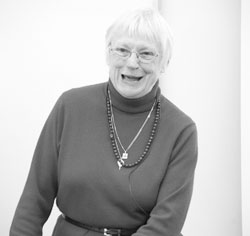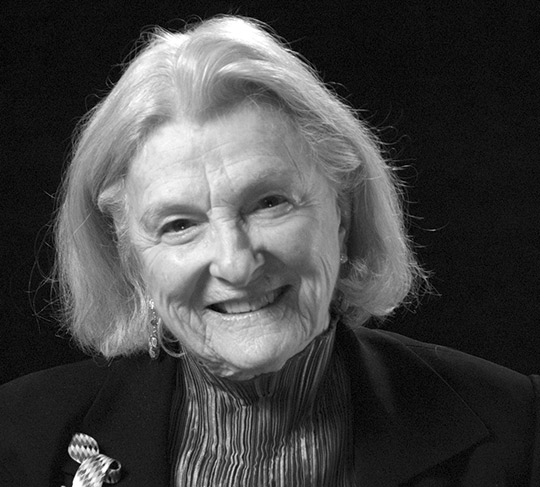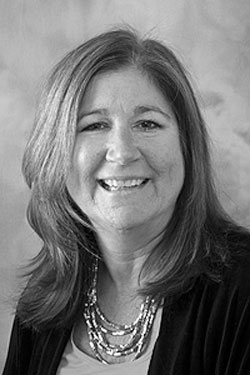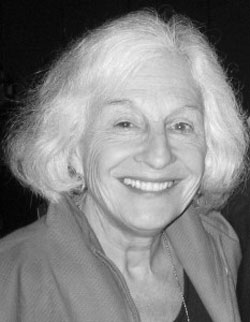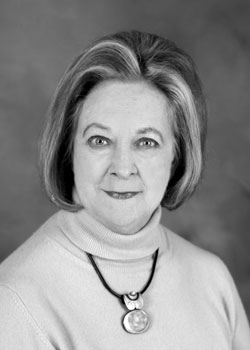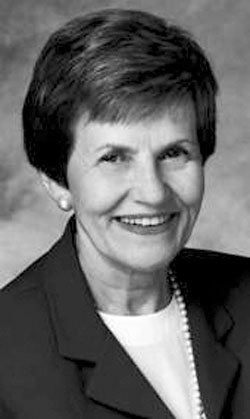As Nurses Go, So Goes Health Care
“If you want to improve the health care system, nurses have to be at the table,” says Margaret McClure (M.A. ’65, Ed.D. ’72), Professor and retired Chief Nursing Officer at New York University’s Langone Medical Center. “But those nurses need to be educated.”
Claire Fagin (M.A. ’51), former Dean of the University of Pennsylvania’s College of Nursing (and subsequently Interim President of Penn itself), calls nursing “the application of science in an artistic way” that requires its practitioners to be “very knowledgeable—about science, about humanity, about patient care.”
The vision of nurses as professionals who, like physicians, teachers and others in highly technical fields, must pursue lifelong learning, was born at Teachers College. Since Mary Adelaide Nutting launched the nation’s first nursing education program more than a century ago, the College has produced thousands of nurse educators. TC now serves the field through its Diabetes Education and Management and nurse executive programs.
“Today, we approach the education of nurses across the breadth of TC’s programs,” says Kathleen O’Connell, TC’s Isabel Maitland Stewart Professor of Nursing Education, and founding Director of the Diabetes Education and Management program, which was launched with a gift from TC Trustee Marla Schaefer (M.A. ’03). “Diabetes is a classic example of an area where the nursing field is making a huge impact, because diabetes is a disorder where most of the management occurs in the patients’ homes. Education by diabetes educators is critical for success.”
Elaine La Monica Rigolosi, Professor of Education and Director of the College’s Executive Program in Nursing, sees nurses as “leaders who are shaping health care” through their management and coordination of patient care and their growing executive function in many medical organizations. She says that now more than ever, all of these functions require the kind of interdisciplinary preparation found at institutions such as Teachers College. “Our society is increasingly diverse, and nurses need to be able to respond as well as to use skills in leadership, management, psychology and other fields. At TC, we’ve been pacesetters in the field.”
McClure and Fagin – both lionized as “Living Legends” by the American Academy of Nursing – and several other prominent TC alumnae have adapted and re-adapted nursing science and practice to the challenges of new eras. Their work cuts across hospitals, nursing homes, birthing centers, homes and schools and has helped shaped the careers of nursing professionals in advanced practice and those of nurse practitioners, nurse midwives and nurse specialists.
All agree that today, when nurses constitute the largest occupational sector in American health care and the defining challenge they face is the management of chronic disease, education is especially important.
Fagin, at 17, attended an undergraduate nursing program at Wagner College after being advised that colleges, rather than hospitals, represented the future of the profession. At Lehman College, she subsequently founded the nation’s first undergraduate baccalaureate program to equip nurses as “primary practitioners” who conducted initial patient workups. Fagin later was a pioneer in shaping gerontological care and in “retirement” has helped create scholarships for nurse educators to conduct research. She believes the profession needs more people with doctorates who can build the discipline and research national policy issues – skills TC helped her to acquire.
“It was an atmosphere of intellectualism that I had never experienced before,” Fagin says. “I felt truly educated.”
McClure, who taught at TC from 1972 to 1981 and received the College’s Distinguished Alumni Award in 1999, has led in encouraging more nurses to obtain four-year bachelor’s degrees. She helped develop nurse-education standards for “magnet hospitals,” a designation increasingly sought by top institutions across the country. In recent years, McClure also has developed seamless protocols for nursing students transferring from New York City community colleges to four-year state institutions. She obtained funding for a pilot program at Queensborough Community College and Hunter College, which is now being replicated at Lehmann Community College and Bronx Community College.
“Nurses need more knowledge to give care in a more complex world,” says McClure. “We’ve raised the ceiling – you can now get a Ph.D. in nursing – but we haven’t raised the floor.”
Indeed, while more than 300 universities offer programs that lead to a doctorate in nursing practice, tens of thousands of nurses continue to earn their R.N. credential from community colleges and a few remaining hospital-based diploma schools.
Lucille Joel (Ed.D. ’70), Professor at Rutgers College of Nursing, says the push to boost the entry-level credential for nursing has had ramifications for the latter group.
“It’s a shabby market for those nurses without a B.S.,” says Joel, a past President of the American Nurses Association who is active in TC’s Nursing Education Alumni Association. “Hospitals have come to expect it.”
Joel, whose textbooks, Kelly’s Dimensions of Nursing and Advanced Nursing Practice Nursing, are widely used on the collegiate level, teaches an online course at Rutgers for R.N.s seeking a four-year degree. She says nursing faculty positions have become increasingly difficult to fill. Funded by the Robert Wood Johnson Foundation, Joel is devising new ways to attract nurses with advanced degrees to the professoriate.
“The salary scale in academia is much below the scale in the practice arena,” says Joel, recipient of TC’s Distinguished Alumni Award in 2012, “so it’s a big challenge to get faculty to stay in academic practice.”
Laura Jannone (Ed.D. ’06), recipient of the New Jersey League 2010 Nurse Recognition Award, is Associate Professor in the School of Nursing and Health Sciences at Monmouth University, where she developed and directs a program to train school nurses. Jannone says school nurses play an increasingly important role as schools mainstream children who depend on medical technologies, such as insulin pumps for diabetics, which require daily monitoring.
More broadly, school nurses are typically the only on-site health professionals serving thousands of students and faculty.
“Our role becomes like a community-health position,” says Jannone, who has testified before New Jersey officials to oppose efforts to eliminate nurses from schools. “You serve a high school with 1,500 kids, and it becomes quite complex.”
Complexity also challenges nurses who practice in nursing homes, where patients have physical, cognitive and functional disabilities. Mathy Mezey (Ed.M. ’73, Ed.D. ’77), Professor Emerita, Senior Research Scientist and Associate Director of the Hartford Institute for Geriatric Nursing at NYU’s College of Nursing, recently developed placement for nursing students in nursing homes and is working on protocols to encourage more nurses to specialize in geriatric care.
“Nursing homes are great places to learn how to interview and interact with people,” says Mezey, co-editor of The Encyclopedia of Elder Care. “The patients you see on Monday and Tuesday will still be there when you come back a week later, so student nurses see that their actions are making a difference.”
Nursing, like other helping professions, including social work and medicine, suffers from a dearth of professionals who choose to specialize in the care of the elderly, Mezey says. She has worked with the American Association of Colleges of Nursing both to develop curriculum materials for geriatric studies and to encourage nursing schools to require courses in geriatric nursing. On the graduate level, Mezey has worked with the AACN to develop web-based resources and cases studies to help faculty introduce mandated changes that will require nursing schools to merge their adult and gerontological programs into combined advanced practice programs.
“This should markedly increase the numbers of advanced practice nurses who can care for older adults,” she says.
On the other end of the life spectrum, Ruth Lubic, (B.S. ’59, M.A. ’61, Ed.D. ’79), has championed personalized care during labor and childbirth, particularly for women in low-income neighborhoods. Lubic – the first nurse to win a MacArthur “genius” award – is a leader in creating opportunities for nurse-midwives to deliver newborns in nurse-run settings. She founded New York City’s Childbearing Center on East 92nd Street in 1975 and co-founded the National Association of Childbearing Centers. She also has helped establish 230 free-standing birth centers across the country – work that earned her the Foremother Award for Lifetime Achievements from the National Research Center for Women and Families.
Her most recent project – the D.C. Developing Families Center, which she founded in 2000 in the nation’s capital – provides comprehensive care to low-income, predominantly African American patients. The family health and birth center, which is run on a nurse-midwifery model, has delivered improved outcomes, with fewer pre-term births, low-birth-weight newborns and deliveries by cesarean section.
“When I was in nursing school in the 1950s, the treatment of women giving birth was almost barbaric,” Lubic recalls. “They’d be put under general anesthesia and cuffed to the table. They weren’t allowed to touch the baby. How could women mother after such an experience?”
She’s now raising funds to implement the D.C. Developing Families Center model across the country. “There are so many places that want to replicate what we’ve done,” she says. “We need to carry it further, to make sure all families have the best chance to raise healthy children who can succeed in their educational efforts.”
Published Friday, Dec. 7, 2012

